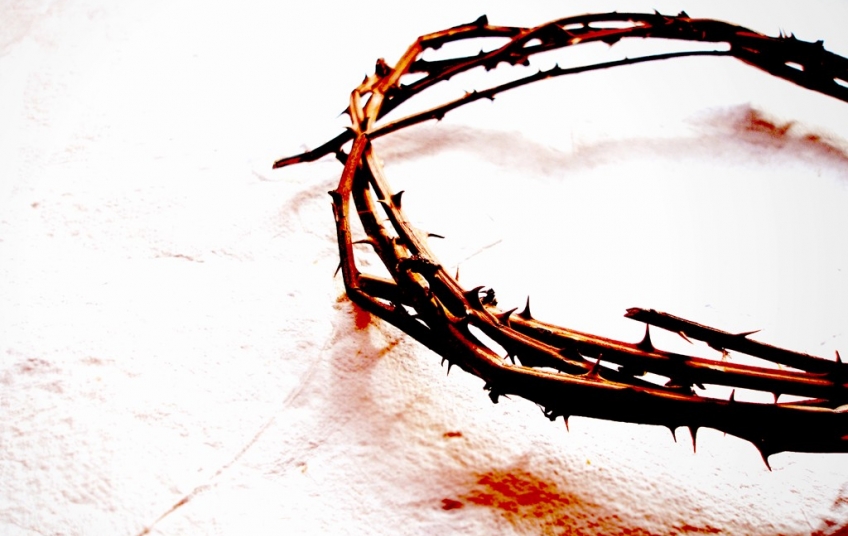PRAYER SHAWL, THE REAL SECRET
Again the Lord spoke to Moses, saying, 38 “Speak to the children of Israel: Tell them to make tassels on the corners of their garments throughout their generations, and to put a blue thread in the tassels of the corners. 39 And you shall have the tassel, that you may look upon it and remember all the commandments of the Lord and do them, and that you may not follow the harlotry to which your own heart and your own eyes are inclined, 40 and that you may remember and do all My commandments, and be holy for your God. 41 I am the Lord your God, who brought you out of the land of Egypt, to be your God: I am the Lord your God.” (Numbers 15:37-41)
I decided to do a follow up post to assist people understand what the real issue is when it comes to the latest trend of using Prayer Shawls. It has further been made popular by recent gospel songs with dancers singing it as a prop.
The Tallit as it is called in Jewish communities is what we call the Jewish prayer shawl. It is the most authentic Jewish garment used during prayer that reminds the wearer of both God’s Covenant and His Commandments that the followers of the laws of Moses must follow.
During prayers, the custom is to wear a large rectangular garment with tzitzit (tallis gadol) and pray while wrapped in it. For the Jew, it was a visual “picture” that would cause them to remember all the (613) commandments of the Lord, and do them; so that they would not follow after their own heart and their own eyes!
In ancient Israel man wore a four cornered tunic, and these tassels were connected to that tunic. The tassels were tied to the four corners of their garment {Prayer-Shawl}. This outer garment eventually throughout history became known as a (Hebrew) “Talith” ! It eventually evolved into a more formal Prayer-Shawl, which is what most Jewish people wear in their Synagogue of congregation
On the shawl you will see what is known as Tassels. It was to remind each Jewish man of his responsibilities to fulfill all of the 613 commandments! The question are now: Are Christians under the laws of Moses for them to be reminded by it?
God knew that the Israelites would fail in keeping the laws and even forget them. So did Moses. After giving them the Ten Commandments and knowing that their heart was not right, God said, “Oh, that they had such a heart in them that they would fear Me and always keep all My commandments, that it might be well with them and with their children forever!” (Deuteronomy 5:29).
Before Moses died God told him that He knew that Israel would forget His laws and Covenant in Deuteronomy 31:16. Moses also knew and warned them (Deuteronomy 31:29). So is it any wonder that God gave them some physical ways to remind themselves of His laws?
Let’s go further to understand it.
The fringe tassels themselves are called tzitzit. Their strings and knots are a physical representation of the Torah’s 613 do’s and don’ts. Each letter in the Hebrew alphabet has a corresponding numerical value. The numerical values of the five letters “צִיצִת -Tzitzis” that comprise the EHebrew word tzitzit add up to 600. Add the eight strings and five knots of each tassel, and the total is 613. That is a lot of detail to demonstrate submission to the law and bind a consciousness of it.
In modern times Israelis wear Western clothes, instead of Eastern clothes they keep this law by wearing a four corner garment as an undershirt. The little tassels are coming out of the four corners around their beltline, Why? For the Orthodox Jew, this is their way of honoring the commands given to them in the Book of Numbers. This modern day undergarment (an adaptation of the traditional Prayer Shawl) keeps them mindful and focused on the laws and ordinances of the old testament. So you can see that it is not just a fashion statement as some claim it to be.
Techelet (Blue Thread)
The Torah instcuted the Jews to include a blue (“techelet”) fringe among the tzitzit fringes. This fringe must be dyed blue with the blood of a shellfish called “chilazon.” This rare fish is a denizen of the Mediterranean Sea. After the Jewish people were exiled from Jerusalem in 70AD, the chilazon was no longer available.
For many centuries after Jews wore tzitzit without a techelet fringe.
During Jesus’ time on earth, people wore a prayer shawl with a tassel that was blue in color and referred to as the “tĕkeleth.” “Tĕkeleth” is from the root word “kālג,” which means “finished” and refers to Jesus’ finished work. When the woman with the issue of blood touched the tassel on Jesus’ prayer shawl (representing the finished work), her bleeding stopped.
In recent times, it has been discovered that the Jewish prayer shawls started being promoted and marketed quite heavily today in the Messianic and Hebrew Roots movements.
Now if you look carefully at the first century church which was initially composed of Jews, you will understand that the persecution they faced from their Jewish brethren was fundamental to everything relating to being Jewish both in worship and lifestyle.
It would interest you to note that the apostle Paul wrote indirectly when he was addressing the subject of authority in the home. He wrote:
“Every man praying or prophesying, having his head covered, dishonors his head” (1 Corinthians 11:4).
1 Corinthians 11:7 adds, “For a man indeed ought not to cover his head, forasmuch as he is the image and glory of God.” To demonstrate submission of the man to Christ, he used the covering of the head, which was the prayer shawl as an example.
New Covenant Fulfillment
Paul called these reminders a schoolmaster—. “Therefore the law was our tutor to bring us to Christ, that we might be justified by faith”(Galatians 3:24). The tutor has now brought us to Christ. We understand that we are to “walk in newness of life” (Romans 6:4), and have “put on the new man who is renewed in knowledge according to the image of Him who created him” (Colossians 3:10).
I hear some Christians say that the new testament is not against the use of it. I believe it is a failure to read between the lines. In Galatians Paul teaches us that the ceremonial laws, given 430 years after the covenant with Abraham (which was based on his obedience to God’s commandments, laws, statutes, and charge—Genesis 26:5) did not change the covenant, but were added because of the record of disobedience of Israel, and would be binding on them until the coming of the Messiah.
In the book of Hebrews we see a list to determine just what laws we are talking about:
“It was symbolic for the present time in which both gifts and sacrifices are offered which cannot make him who performed the service perfect in regard to the conscience—and concerned only with foods and drinks, various washings, and fleshly ordinances [physical rites] imposed until the time of reformation. But Christ came as High Priest of the good things to come, with the greater and more perfect tabernacle not made with hands, that is, not of this creation” (Hebrews 9:9-11).
As a result of Jesus Christ being seated at the right hand of the Father and sending the Holy Spirit to be our helper, we now are to have the laws and commandments of God in our heart and mind. This is the most consequential change made possible by the sacrifice of Jesus Christ on our behalf, and was prophesied by Jeremiah (Jeremiah 31:31-33), then reaffirmed by the author of Hebrews (Hebrews 8:8-10).
The instruction to make tassels to remind Israelites not to forget God’s law is now applied by worshipping God not just outwardly, but in spirit and truth. Jesus Christ told the woman at the well, “God is Spirit, and those who worship Him must worship in spirit and truth” (John 4:24).
I believe many people have forgotten in a hurry how Jesus denounced the scribes and Pharisees.
“They do all their works to be seen of men; for they make wide their phylacteries small cases enclosing certain Scripture passages, worn during prayer on the left arm and forehead) and make long their fringes [worn by all male Israelites, according to the command].” (Matthew 23:5) AMPC.
Jesus stood up to their stance of religious-looking things in order to be seen by others. Over and over again, Jesus rebuked the Pharisees for their approach to their worship—stating that it was hypocritical (Luke 12:1), and that they had made the law of God of no effect in their lives due to their traditions (Mark 7:7-8). Their worship was vanity because their motive was wrong.
In the new testament, we have a different order. It’s not about physical observation but a life driven by the Spirit. All the rites and ceremonies of the old were symbols and shadows of the finished work of Christ. We are now called to seek those things that are above, where the Christ reigns from on high (Colossians 2:20-3:1). We now have a “better covenant based on better promises” (Hebrews 8:6).
This is not the time to pursue the vain religion of the Pharisees that seeks recognition from other people. Instead, let us pursue those things which edify the Body, joining and knitting it together by what every member supplies (Ephesians 4:16). We can only do this by following the pattern of the Spirit and not of the law.


